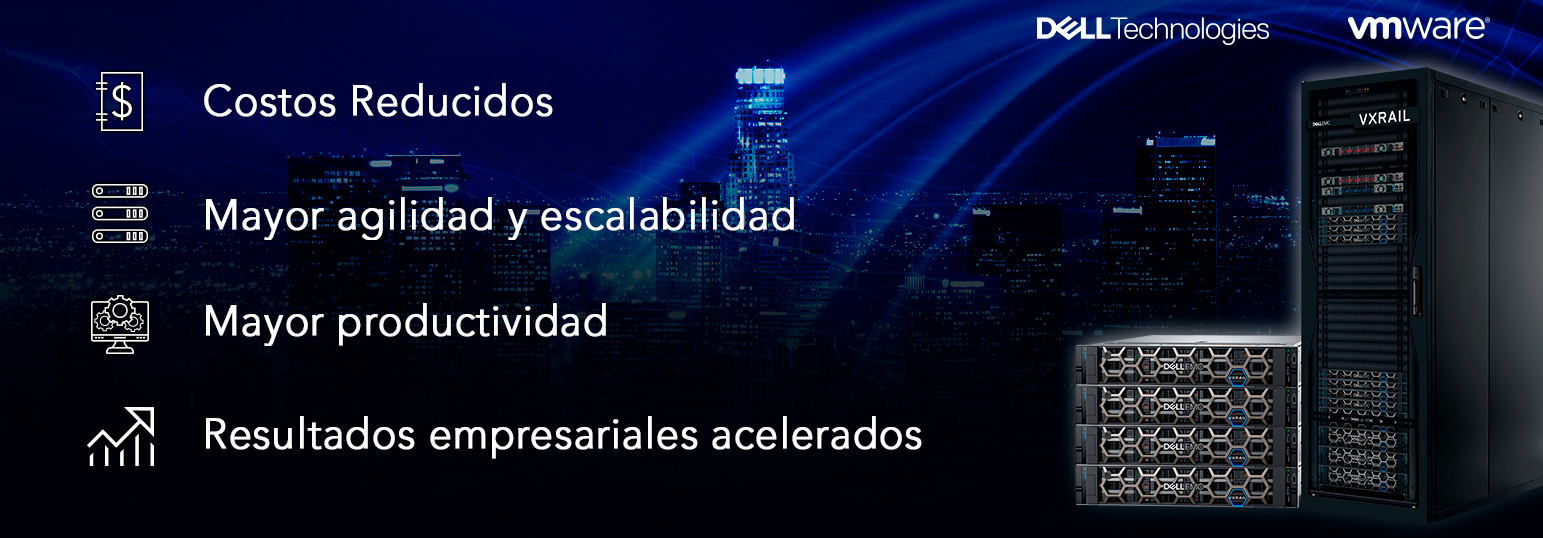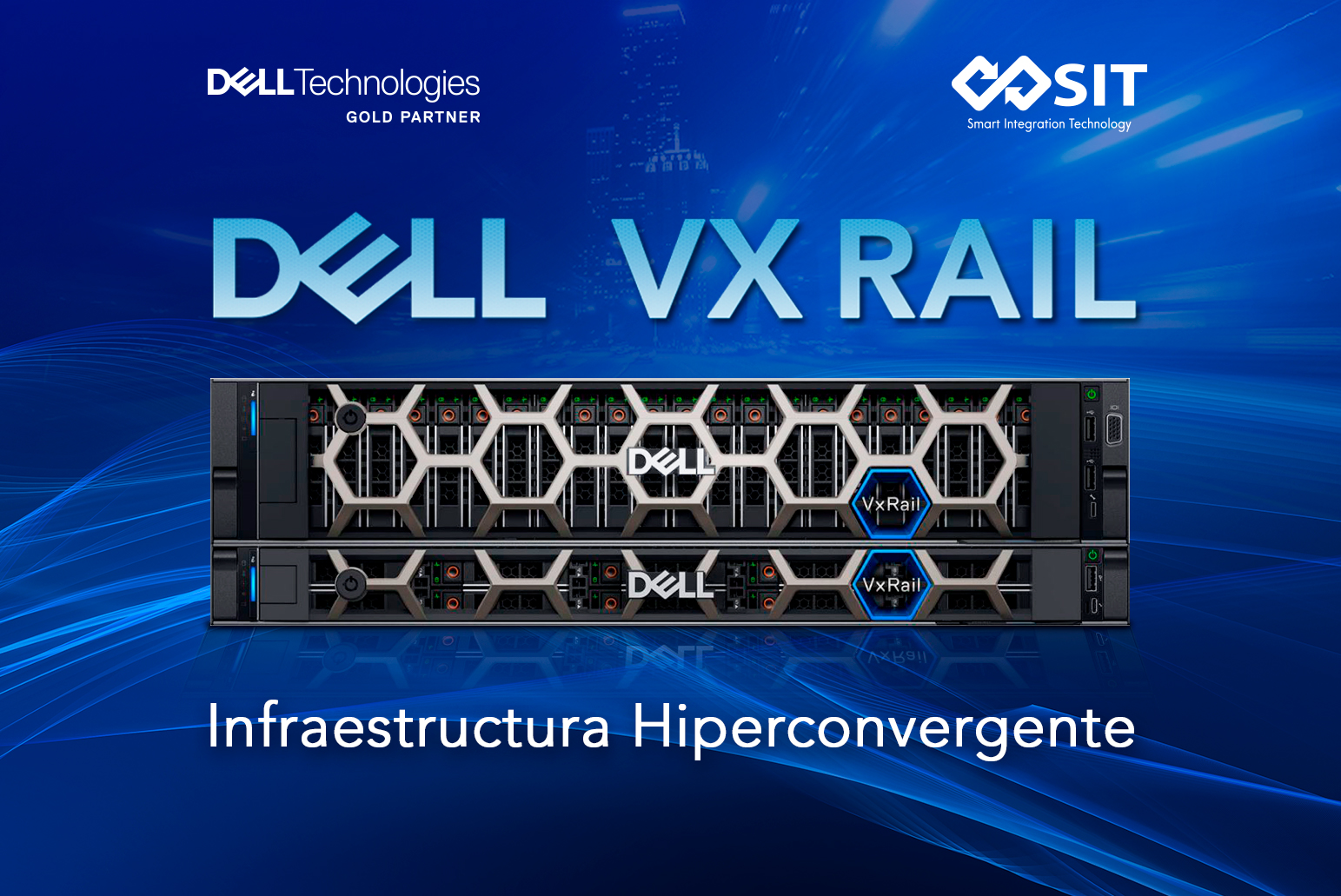Meet DELL EMC VxRail: Hyperconverged Infrastructure
Before discussing the device, we would like to talk a bit about hyperconvergence and its advantages.
Hyperconvergence combines storage, compute, networking, and management into a single device, simplifying the IT infrastructure.
Additionally, it allows for easy scalability, adapting to the real needs of the business.
Hyperconvergence helps reduce latency and improves application performance by having the necessary resources in the same place, allowing workloads to be processed more quickly.
Managing and monitoring resources is easier since hyperconverged devices offer centralized infrastructure management through a single interface.
DELL EMC VXRAIL: Designed for VMware, with VMware, and to enhance VMware

Dell VxRail is a hyperconverged infrastructure system developed in collaboration with VMware. It is user-friendly and enables VMware customers to rapidly expand their environments. VxRail is built on VMware vSAN technology and managed through VMware vCenter, providing a consistent operational experience. It supports Dell Technologies Cloud and VMware Cloud Foundation SDDC Manager, offering a comprehensive and automated platform.
VxRail uses modular and scalable components, making it easy to grow capacity and performance as needed. The VxRail HCI System software ensures workloads are always running through automatic, non-disruptive updates. It provides detailed infrastructure health reporting and supports various processor, storage, and networking options.
VxRail’s dynamic nodes allow independent scaling of compute and storage based on workload demands. It also supports external Fibre Channel storage and can extend to VMware vSAN HCI Mesh environments.
VxRail is an ideal choice for customers in industries such as retail, telecommunications, manufacturing, and remote offices. It includes critical data services at no extra cost and features premium support from Dell Technologies, offering remote monitoring and repair to ensure maximum availability.
General Features
Modular Scalability: It can grow alongside your business needs.
Developed in partnership with VMware: Compatible with VMware, one of the leading virtualization platforms in the market.
Simplified Management: Allows monitoring and control of all system aspects from a single console.
Optimized Performance: Designed to deliver optimal performance in virtualized environments. It uses specialized technologies to ensure efficient application performance.
High Availability: VxRail is designed to provide high availability, with redundancy at multiple levels including storage, power, and networking. This ensures business continuity and minimizes downtime in case of failures.
Hardware Flexibility with options for processors, storage, and networking.
Premium support from Dell Technologies and remote monitoring services.
Compatibility with Dell Technologies Cloud for seamless integration in hybrid cloud environments.
Why Choose DELL EMC VxRail?
More Efficient IT Infrastructure Equipment.
Enhanced Security in IT Equipment.
Faster Business Transaction Processing.
Faster Deployment of New Virtual Machines.
Benefits of VxRail
Greater Agility and Operational Efficiency: VxRail simplifies infrastructure management and deployment, enabling businesses to optimize their operations and respond more swiftly to business demands. Its pre-configured setup and flexible scalability make it easy to adapt to changing needs and allow for faster implementation of new projects.
Higher Performance and Productivity: VxRail, with its optimized performance and scalability, enables businesses to run workloads efficiently and without interruptions. This translates into increased productivity and end-user satisfaction by ensuring fast and reliable access to applications and data.
Improved Business Continuity: VxRail’s high availability and resilience reduce unplanned downtime and enhance business continuity. Multi-level redundancy and disaster recovery capabilities ensure the availability of critical services and protect business data.
Reduced Complexity and Lower Costs: Integrating hyperconverged infrastructure into a single device simplifies management and reduces the complexity of the IT infrastructure. This saves time and resources in terms of setup, administration, and troubleshooting. Additionally, flexible scalability allows businesses to acquire only the resources they need, avoiding excessive investments and optimizing infrastructure costs.

